Strolling through Noto’s golden-hued streets, I felt like I’d wandered straight into a perfectly designed baroque fantasy. I stumbled on this Sicilian treasure during my travels, and honestly, the beauty just stopped me in my tracks.
Noto’s remarkable uniformity and baroque splendor owe everything to the massive earthquake of 1693. That disaster wiped out much of southeastern Sicily and gave architects the rare chance to start over—to rebuild the entire town with a fresh, cohesive vision.
Disaster gave way to something special here—a city where every church, palazzo, and street corner seems to be in sync. Most towns rebuilt on their original sites, but not Noto. They picked up and moved it entirely, then redesigned it on a grid system under Giovanni Battista Landolina.
The warm limestone buildings glow amber as the sun dips lower, casting a kind of magic you don’t find elsewhere in Sicily.
As I wandered Noto’s elegant streets, I kept thinking about how tragedy somehow turned into triumph. The urban planning here is so impressive, you really have to see it if you’re in Sicily.
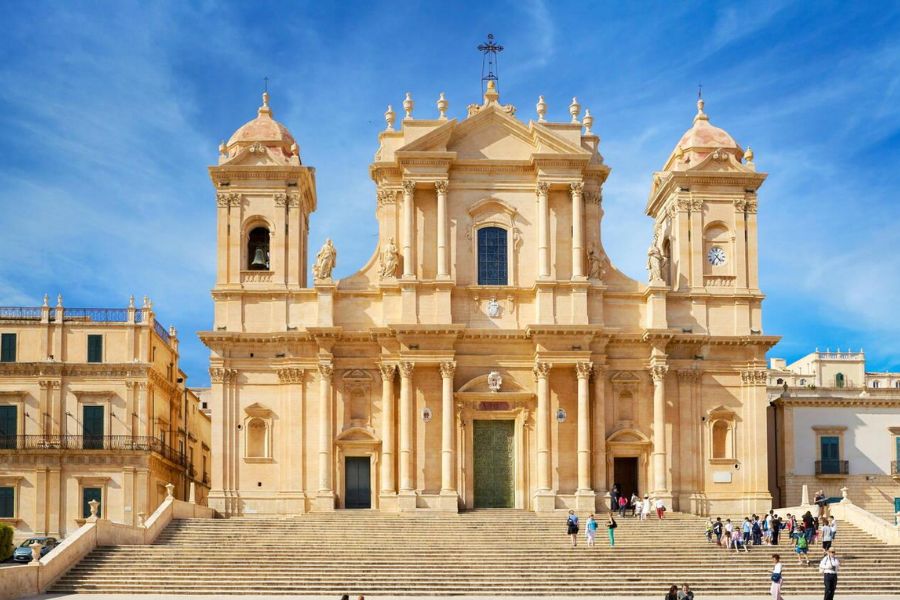
Graceful staircases, ornate balconies, and those intricate facades—architects had a field day with creative freedom after the catastrophe, turning destruction into one of Europe’s most stunning baroque cities.
The Devastation and Rebirth of Noto
Noto’s story is all about resilience and artistic vision. This Sicilian town literally rose from ashes to become one of the world’s best examples of Baroque architecture and urban planning.
The Earthquake of 1693
On January 11, 1693, a devastating earthquake changed southeastern Sicily forever. It was one of Italy’s most powerful quakes, about 7.4 on the Richter scale.
Nearly 60 towns in the Val di Noto region suffered, and 20—including the original Noto Antica—were completely destroyed.
The human cost was staggering. Over 60,000 people died across Sicily, and thousands in Noto alone. I’ve walked among the ruins of Noto Antica, which still sit about 10 kilometers from today’s city.
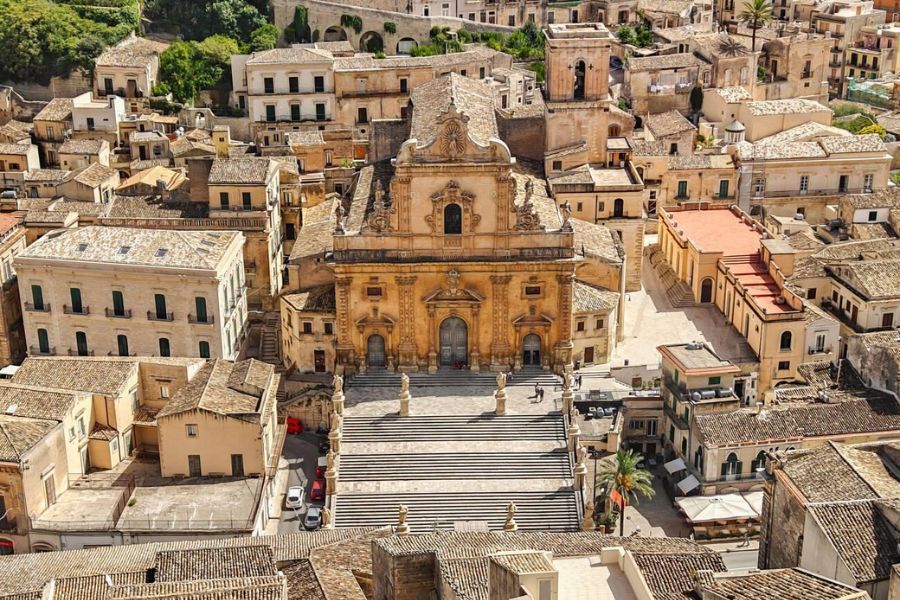
Scattered stones and old foundations linger as haunting reminders of what once stood there.
Authorities decided the destruction was so total, they had to abandon the ancient site instead of rebuilding.
Rebuilding Noto in the 18th Century
Reconstruction started in 1703 at a new location. I’m always a little awestruck by the forward-thinking urban planning that shaped the new Noto.
They designed three main streets running east to west, aiming to capture as much sunlight as possible.
Rebuilding became a chance for real artistic expression. Leading architects like Rosario Gagliardi, Vincenzo Sinatra, and Paolo Labisi turned disaster into a showcase for Sicilian Baroque.
Everyone used the local golden limestone. If you visit at sunset, you’ll notice the whole city glowing with a honey-colored warmth.
That uniform look created a harmonious cityscape that feels so intentionally planned.
Churches, palaces, and civic buildings sprang up with elaborate decorations, curved facades, and ornate balconies.
Ferdinand II’s Influence
Ferdinand II of the Two Sicilies left his mark on Noto during the 19th century. His reign (1830-1859) brought a period of architectural refinement to the city.
Under Ferdinand’s rule, several important structures were completed, adding to Noto’s Baroque character. The Cathedral of San Nicolò—its dome added in 1864—still stands as a testament to this royal influence.
Buildings from this era show off more neoclassical touches, but they still blend beautifully with the earlier Baroque. Ferdinand’s administration brought in funding and expertise that helped Noto keep its unified look.
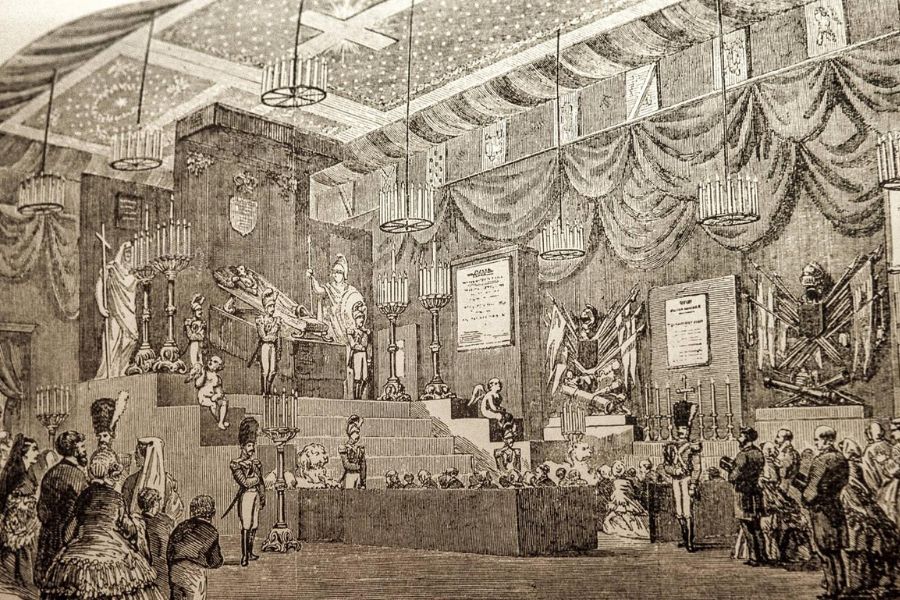
The city’s planning reflects enlightenment values from this period, with wide streets and elegant public spaces that make Noto such a pleasure to wander even now.
Baroque Masterpieces: Noto’s Architectural Heritage
Walking through Noto feels like diving into a golden treasure chest of Baroque architecture. The details are incredible—ornate facades and dramatic flourishes everywhere, all capturing the theatrical spirit of the Baroque.
Sicilian Baroque and Baroque Style
Sicilian Baroque in Noto really stands apart from the broader Baroque movement. That honey-colored limestone gives the buildings a warm, glowing look at sunset—honestly, it’s kind of magical.
This style is all about elaborate decorations, curved facades, and bold use of light and shadow. There’s a theatrical quality here—buildings almost perform for you as you wander by.
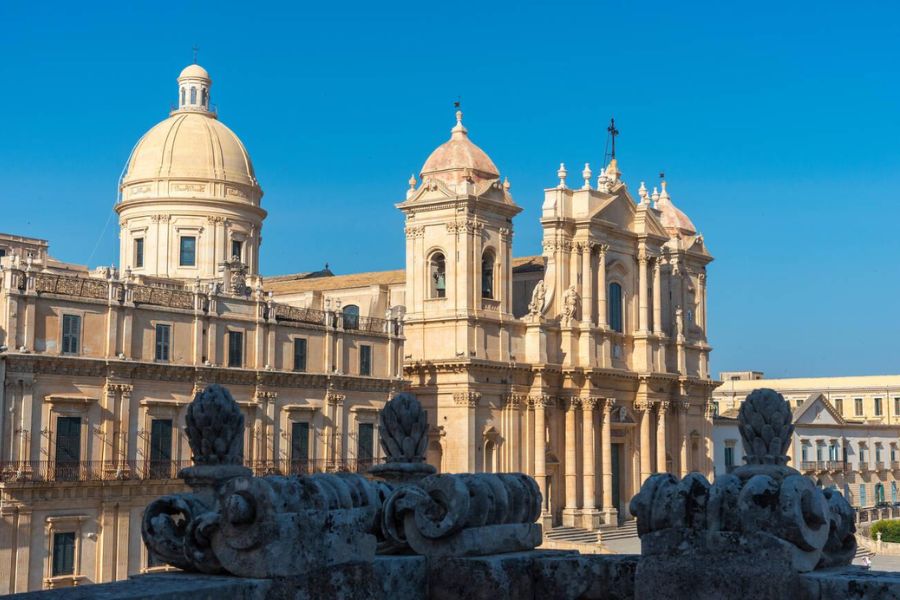
Architects like Rosario Gagliardi and Vincenzo Sinatra took traditional Baroque ideas and gave them a Sicilian twist. They added playful touches—grotesque masks, putti (cherubs), and floral motifs you won’t see anywhere else.
Baroque Buildings and Grand Palaces
Noto’s main street, Corso Vittorio Emanuele, is basically an open-air gallery of Baroque wonders. I’d suggest starting at the Porta Reale gateway and just strolling from there.
Some of the most impressive palaces:
- Palazzo Nicolaci di Villadorata: Check out the wild balconies held up by mermaids, horses, and grinning faces.
- Palazzo Ducezio: The town hall, with its elegant curved front.
- Palazzo Astuto: Amazing ironwork balconies.
Each palace tells a story of noble families trying to outdo each other—these weren’t just homes, but status symbols meant to impress.
Palazzo Ducezio and the Town Hall
Palazzo Ducezio, now Noto’s town hall (Municipio), stands out as one of the city’s most elegant buildings. Its design is simple and refined, especially compared to the more ornate neighbors.
Built between 1746 and 1830, the palace features a graceful colonnade on the ground floor, creating a welcoming public space.
Inside, the Hall of Mirrors dazzles with gold decorations and sparkling chandeliers.
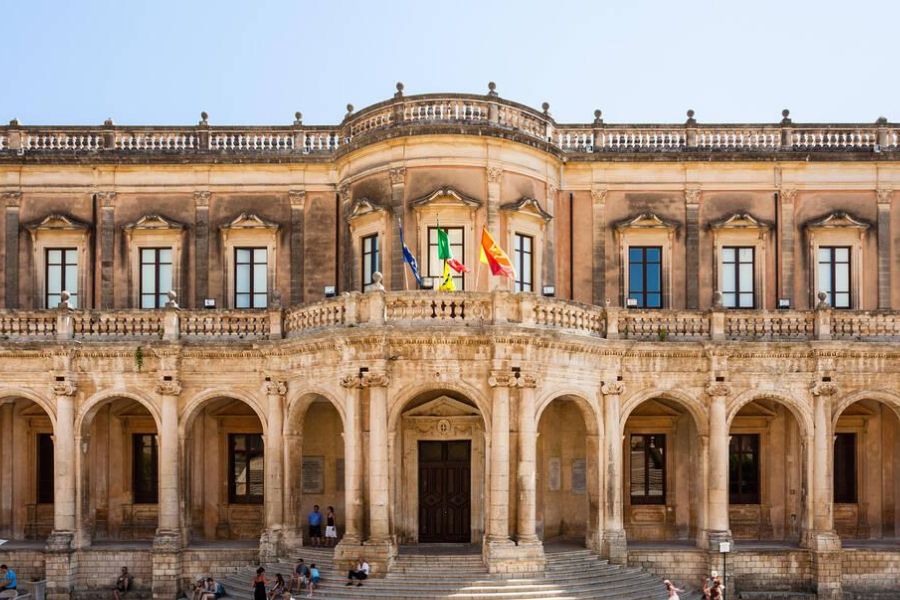
Vincenzo Sinatra, one of Noto’s master architects, designed this building. I love how it manages to feel grand and accessible at the same time—important, but not intimidating.
Baroque Architecture Influences
The architects who rebuilt Noto pulled inspiration from all over. I spotted hints of:
- Roman classical architecture in the columns and proportions.
- Spanish Baroque in the dramatic details.
- French formal design in the city layout.
But here’s the thing: they mixed these influences with local traditions. The chance to design an entire city from scratch doesn’t come around often, and they ran with it.
They put a premium on theatrical effects and visual drama. Buildings line up to create dramatic views and perspectives, with churches set at the end of streets as focal points.
Exploring Noto’s Iconic Landmarks
Noto’s jaw-dropping baroque architecture turns the city into an open-air museum. The golden limestone buildings all work together, creating a vision of baroque splendor that’s hard to match.
Noto Cathedral: A UNESCO-Listed Icon
The Noto Cathedral is the crowning jewel of the city’s baroque scene. When I first saw it from the grand staircase, its imposing façade just stopped me.
Built between 1694 and 1703, the cathedral’s honey-colored limestone glows in the Sicilian sun.
The cathedral’s dome collapsed in 1996—a real tragedy—but after years of careful restoration, they reopened it in 2007. Now, it proudly holds UNESCO World Heritage status.
Inside, I found the space bright and airy. Three naves are separated by massive pillars, and beautiful frescoes cover the ceiling.
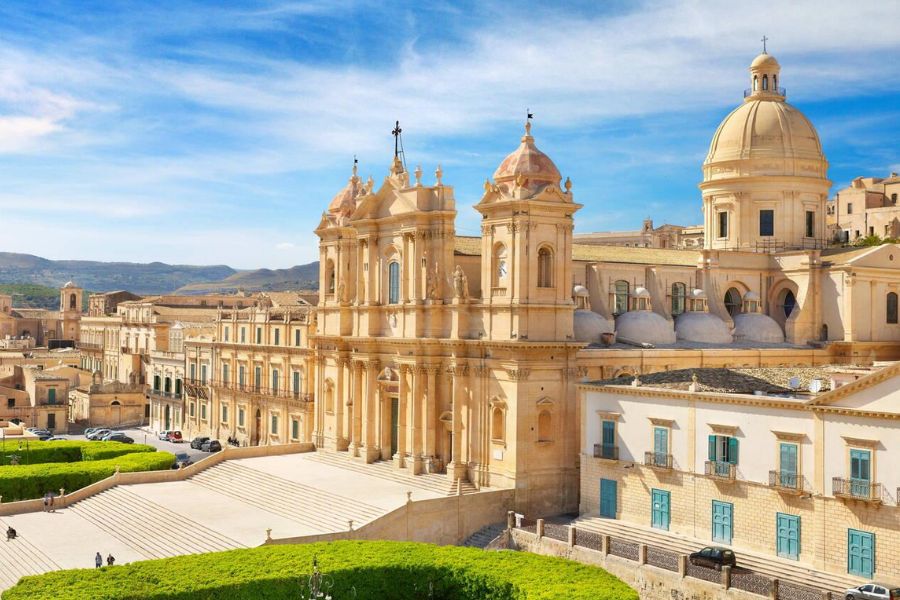
Don’t forget to check out the silver urn with relics of San Corrado, Noto’s patron saint.
If you want the best photos, come in late afternoon when the golden light hits just right.
Corso Vittorio Emanuele and Porta Reale
I started my Noto adventure at Porta Reale, the grand triumphal arch that welcomes you into the city. This impressive gateway opens onto Corso Vittorio Emanuele, the city’s main artery.
The corso cuts through the historic center, showing off Noto’s dramatic urban planning. As I wandered the limestone-paved promenade, baroque palaces and churches revealed themselves like scenes in a perfectly staged play.
Three piazzas break up the corso, each with its own landmark. I especially liked Piazza Municipio, home to the striking Town Hall and the Church of San Domenico with its convex façade.
The street really comes alive in the evening. Locals and visitors join the passeggiata, strolling and soaking up the atmosphere.
Palazzo Nicolaci di Villadorata and Via Nicolaci
Via Nicolaci might just be my favorite street in Noto. It’s short but absolutely packed with beauty, anchored by Palazzo Nicolaci di Villadorata, once home to one of Sicily’s richest noble families.
The palace façade sports 90 ornate stone corbels under the balconies. Each one is different—fantastic creatures, grotesque faces, cherubs, mythological figures. I probably spent an hour just snapping photos of them.
Inside, I wandered through lavish apartments with frescoed ceilings and period furniture. The palace library, with over 8,000 volumes, hints at the intellectual life of its former owners.
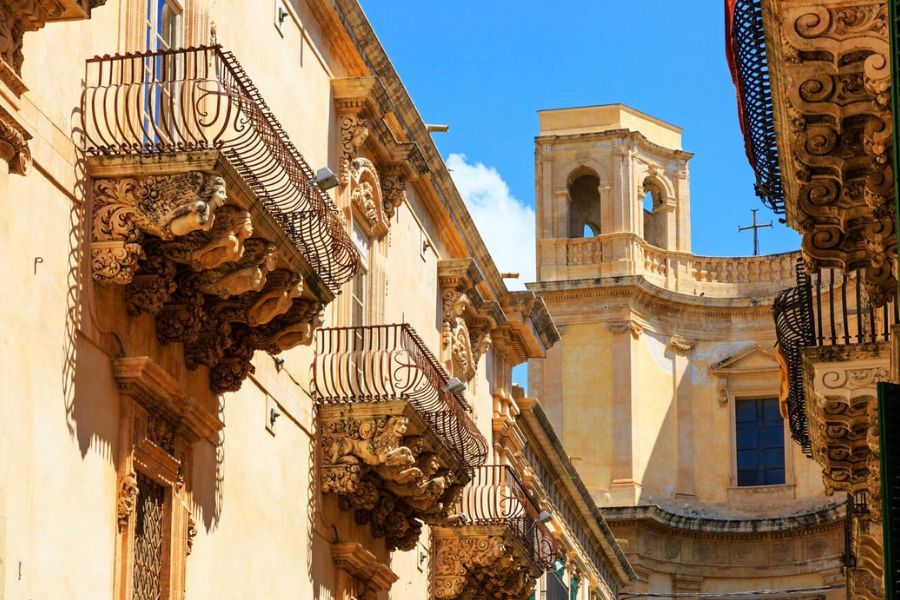
Every May, Via Nicolaci transforms for the Infiorata festival, when artists create breathtaking floral carpets along the street. If you can time your visit for this, do it.
Church of Santa Chiara and Basilica del Santissimo Salvatore
The Church of Santa Chiara really surprised me. Its curved façade moves with the street, typical of baroque architecture.
Inside, I found elaborate stucco work and paintings by Francesco Cassone.
Climbing to the roof terrace was the real highlight. For just a small fee, I got one of the best panoramic views over Noto’s domes and bell towers, with countryside stretching beyond.
The Basilica del Santissimo Salvatore stands out with its impressive dome, visible from all over town. Its façade plays with concave and convex forms, casting light and shadow that shift throughout the day.
Inside, marble inlays and altars show off the era’s extraordinary craftsmanship. The old convent next door once housed Benedictine nuns and now holds a small museum of religious artifacts.
Artistry and Culture in Noto
Noto’s artistic spirit shines through its baroque architecture, religious art, and lively cultural traditions that celebrate the city’s resilience and creativity.
Frescoes and Chapels
Walking into Noto’s churches feels like entering living art galleries. The Cathedral of San Nicolò stopped me in my tracks with its intricate frescoes—celestial scenes bursting with color and emotion across the ceilings.
The Jesuit Church has some of my favorite religious art in all of Sicily. Its chapels are filled with masterful paintings of saints and biblical stories, created by renowned 18th-century artists who flocked to Noto after the rebuilding.
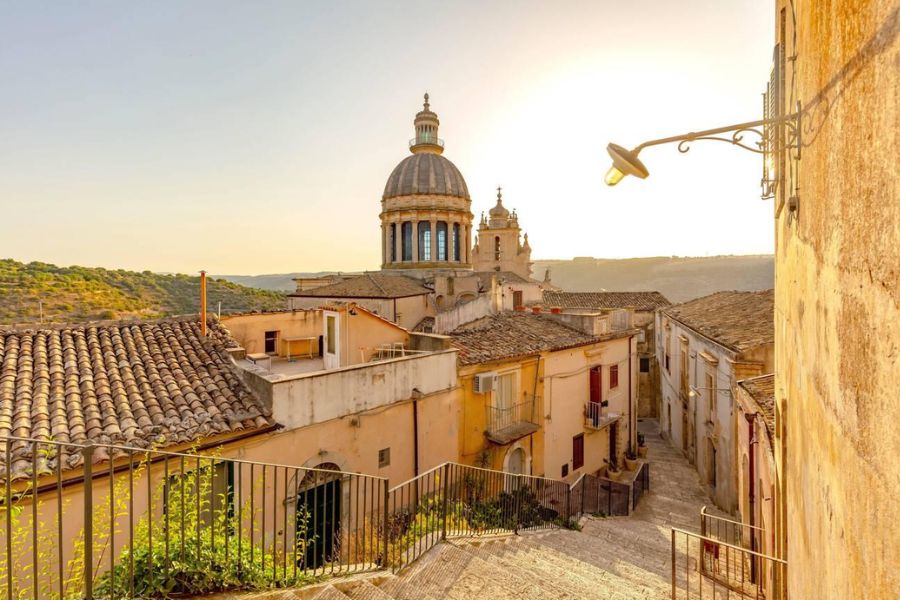
Don’t skip the Church of Santa Chiara. There’s a chapel inside with stucco work and gorgeous frescoes—a perfect blend of art and faith. The delicate brushwork and vivid colors have survived centuries of Sicilian sun and humidity, which is pretty impressive.
Infiorata: The Floral Festival
Every May, Noto bursts into color during the spectacular Infiorata festival. Artists line Via Nicolaci with breathtaking mosaics made from thousands of flower petals.
I’ve stood there, honestly just in awe, watching local artisans fuss over every petal. They arrange these natural materials into intricate designs—sometimes religious, sometimes inspired by Sicilian folklore, or even current events.
The scent of fresh flowers just hangs in the air. For a few days, the cobblestone street becomes a living, temporary canvas.
Back in the 1980s, people started this tradition, and it has since grown into one of Sicily’s biggest cultural events. Families gather, tourists crowd the streets, and photographers hustle to capture the fleeting beauty before a breeze can ruin the delicate art.
The Hall of Mirrors
Inside Palazzo Ducezio, Noto’s town hall, I stumbled into the Hall of Mirrors (Sala degli Specchi). This place honestly took my breath away with its gilded mirrors, sparkling crystal chandeliers, and neoclassical frescoes.
Antonio Mazza painted the ceiling in the late 18th century, filling it with allegories of virtue and good governance. Light bounces off every mirror, multiplying the room’s grandeur and giving it this unmistakable aristocratic vibe.
People use the hall for important civic ceremonies and weddings. When I visited, a local guide pointed out how they placed the mirrors just right to make the most of the natural light—pretty clever, if you ask me.
Noto and the Sicilian Baroque Triangle
In Sicily’s southeast corner, you’ll find an architectural wonder called the Baroque Triangle. Noto sits at the heart of it, with its equally impressive neighbors, forming one of Europe’s most stunning Baroque landscapes.
Connections with Modica and Ragusa
I’ve wandered for hours through the three main cities of the Baroque Triangle. Noto, Modica, and Ragusa all share a history marked by devastation and rebirth after the massive 1693 earthquake.
Walking around Modica, I noticed the city splits into upper and lower sections. Both levels are dotted with spectacular Baroque churches.
The Church of San Giorgio stands out as my personal favorite example of Sicilian Baroque here. It’s just breathtaking.
Ragusa feels even more dramatic. The city divides into Ragusa Ibla (the old town) and Ragusa Superiore (the new part).
If you’re heading there, start in Ibla. The narrow, winding streets take you to gorgeous piazzas and the magnificent Duomo di San Giorgio.
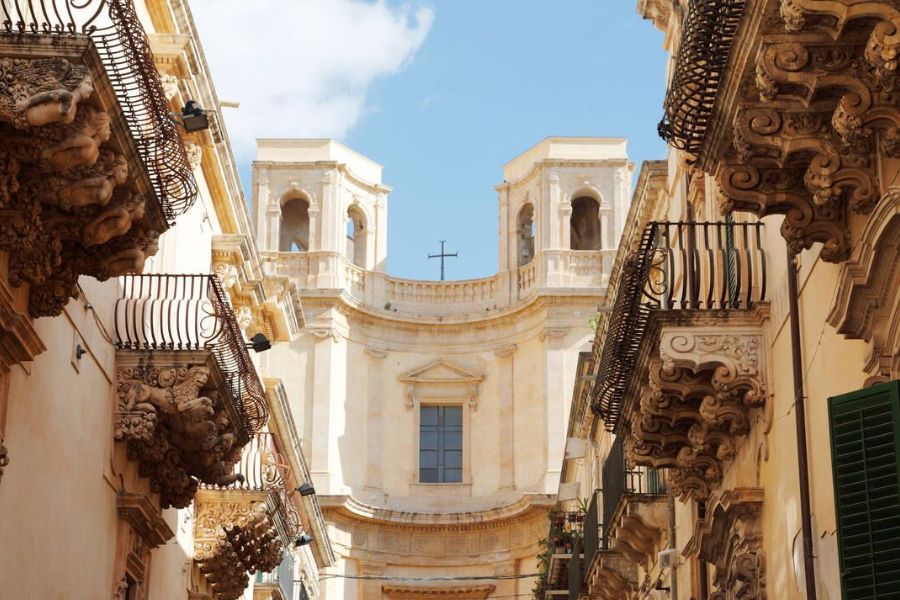
These three cities form the core of what locals call the Val di Noto. It’s a living testament to human resilience and artistic flair.
Catania and Syracuse’s Baroque Influence
Outside the main triangle, Catania and Syracuse show off their own Baroque wonders. Catania rebuilt itself after losing two-thirds of its population in the 1693 earthquake, using dark volcanic stone from Mount Etna.
I couldn’t help but be amazed by Catania’s Piazza del Duomo, with its iconic elephant fountain and grand cathedral. The wide avenues and imposing buildings create a more urban Baroque feel than what you’ll find in Noto.
Syracuse’s historic center sits on the island of Ortigia, blending Greek, Roman, and Baroque influences. The Piazza del Duomo here might be one of Sicily’s most beautiful spots. Those honey-colored Baroque buildings glow golden in the late afternoon.
Both cities make for fantastic day trips from Noto. Each one offers its own twist on Sicilian Baroque style.
The Broader UNESCO World Heritage Site
The Val di Noto picked up its UNESCO World Heritage status back in 2002. Eight towns made the list:
- Noto
- Ragusa
- Modica
- Catania
- Syracuse
- Caltagirone
- Militello Val di Catania
- Scicli
Honestly, I think renting a car works best if you want to explore these places. Each town feels unique, even though they all show off that same Baroque architectural vibe.
Palermo and Agrigento might attract more tourists, but Val di Noto gives you a much more authentic taste of Sicily. The whole area stands out because everyone came together after disaster struck.
Local architects really went for it, creating a Sicilian Baroque style that’s hard to find anywhere else. You’ll notice dramatic facades, fancy balconies, and quirky details that set it apart from the Baroque you’d see on the mainland.

